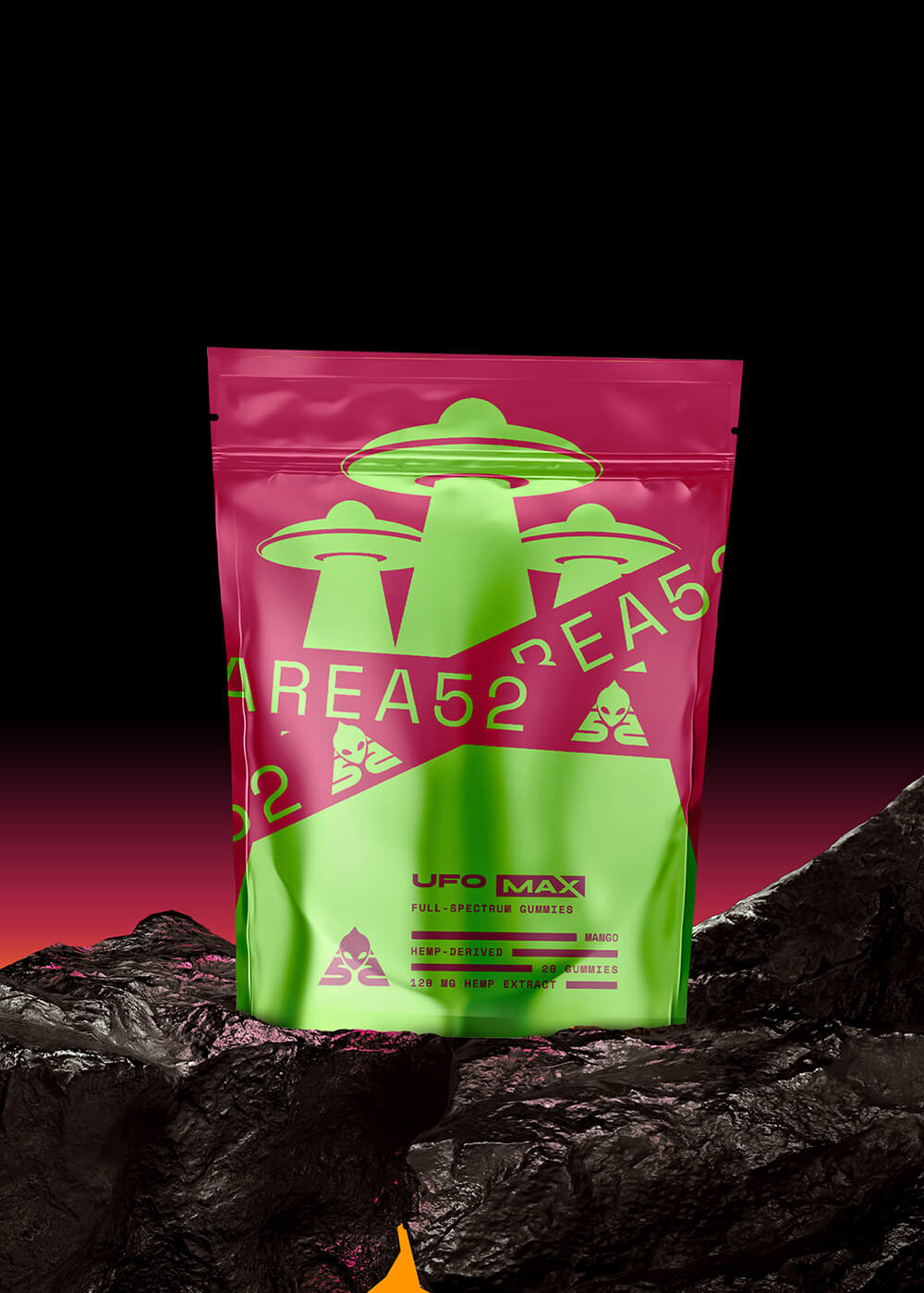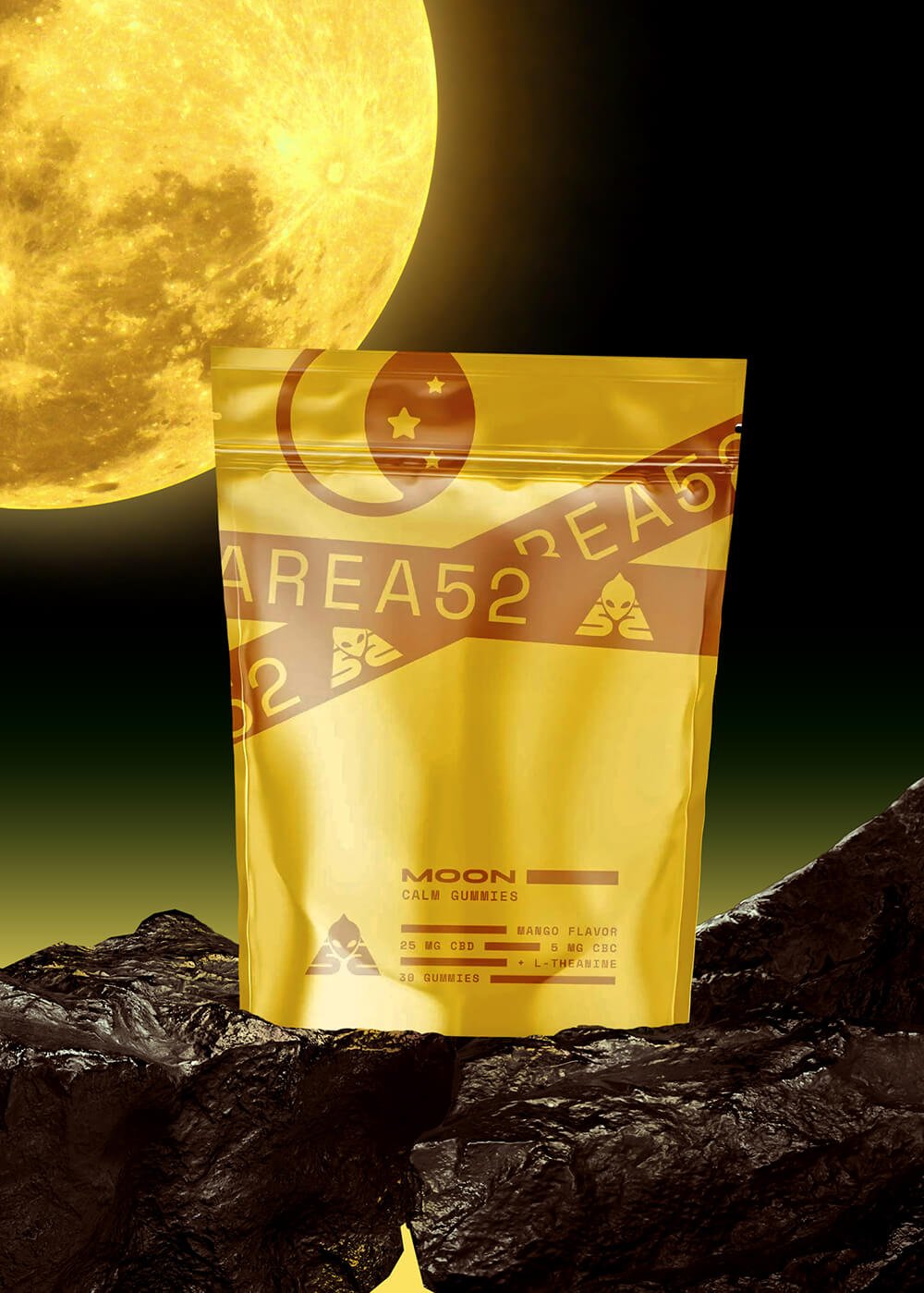CBG vs. CBN: What Are The Differences?

As the cannabinoid industry grows every year, more people become interested in the varying effects of different cannabinoids.
Unfortunately, confusion about the substances also abounds.
This guide clears up some misconceptions about two increasingly popular (and strikingly similar) cannabinoids: CBG (cannabigerol) and CBN (cannabinol).
What’s the Difference Between CBG & CBN?
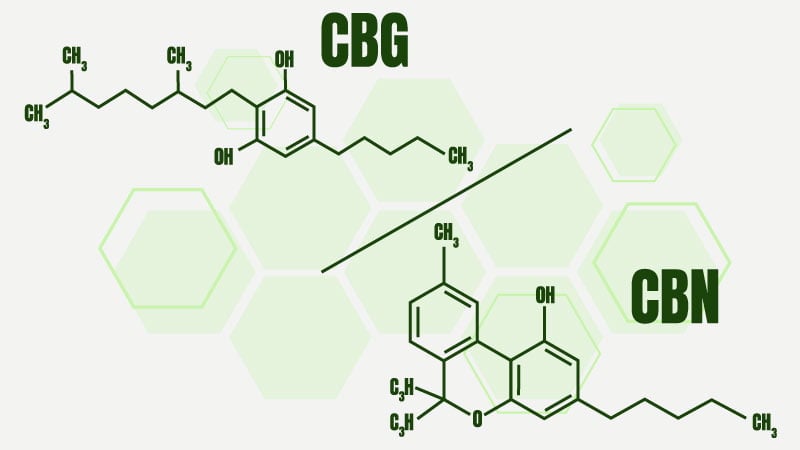
CBG and CBN are very similar in chemical structure, and they both appear naturally in marijuana and hemp plants. They both interact with the body’s endocannabinoid system and bind to CB1 and CB2 receptors.
The primary difference between CBG and CBN is how they appear naturally in cannabis plants.
CBG is considered the “mother of all cannabinoids” because it serves as the starting point for nearly all other cannabinoids. CBG is converted to CBD, CBC, or THC with the help of specialized enzymes.
CBG is present in small volumes in mature marijuana and hemp plants due to this degradation, and early harvesting is the best way to get a product high in CBG.
Similarly, CBN is also not present in high volumes in mature cannabis plants, and instead, it appears when THC is exposed to UV light. The light degrades THC is degraded into CBN.
CBN is a natural cannabinoid that shows up in cannabis plants growing naturally under the sun. Direct and intentional exposure to UV light also yields this cannabinoid in a lab setting.
Comparison Chart of CBG vs. CBN:
| CBG | CBN | |
| Effect Profile | Motivating, non-psychoactive | Calming, somewhat psychoactive |
| Legality | Legal federally and in all states, provided it’s derived from hemp plants | Illegal federally and in most states, except where marijuana is legalized |
| Cost | Very expensive | Very expensive |
| Market Availability | Very limited | Very limited |
| Dose | 5-10 mg for beginners
10-25 mg+ for regular users |
2.5 mg to start, increasing until desired effects are reached |
| Percentage In Hemp | Less than 2% in mature plants but up to around 30% in younger plants | Trace amounts or none |
| Percentage in Marijuana | Less than 2% in mature plants but up to 30% in younger plants | Trace amounts in recently harvested flower but up to 30% after being exposed to light |
| Optimal Growth Stage | Highest in under-ripe cannabis | Highest in overripe cannabis |
CBG vs. CBN: Effect Profile
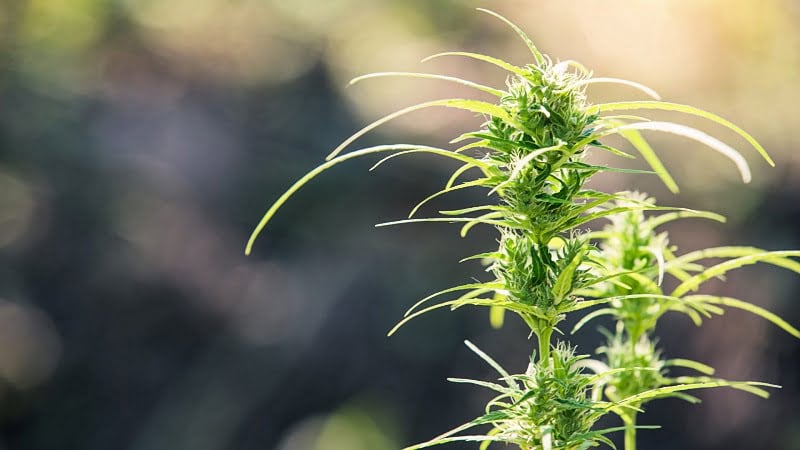
Despite interacting with CB1 and CB2 receptors in the endocannabinoid system, CBG and CBN couldn’t be more different in their effects on the user.
Most CBG users report feeling effects similar to coffee but less anxious. Most users also note feeling like they deal with fewer distractions and are more positive. As such, most individuals use CBG for working, studying, or concentrating on a particular task.
CBG is non-psychoactive, so there’s no high associated with consumption.
On the other hand, CBN is more closely related to THC since it’s essentially degraded THC. As such, CBN is likely to produce some kind of psychoactive effect in users, but most report that it’s much less intense than consuming THC.
CBG vs. CBN: Legality
CBG and CBN are subject to very different laws due to their sources.
CBG is legal on a federal level and in most states because it comes from young hemp plants. The 2018 Farm Bill made the production and sale of commercial hemp and all products made with hemp. It also defined hemp as a cannabis plant with less than 0.3% THC by weight [1].
Since hemp is legal, all CBG derived from hemp is also legal without restriction.
CBN can also be made from hemp legally. Just make sure you order from companies that use exclusively hemp-derived CBN. Some companies manufacture CBN by exposing THC to UV light. These products are considered “marijuana-derived.” Products made from marijuana are illegal federally and in most states.
CBG vs. CBN: Cost
CBG and CBN are both currently considered some of the most expensive cannabinoids for two primary reasons. First, they’re relatively new to markets, so few manufacturers offer them; there are no mass-manufacturing techniques for producing them affordably.
Secondly, both CBG and CBN are produced in very low concentrations in the plant. Extra processes are needed to manufacture these cannabinoids on a commercial scale.
CBG vs. CBN: Market Availability
CBG and CBN are both available on the market but are much harder to find than CBD or THC.
CBN is rare for the same reasons but even more so because it’s only legal to sell in states that have legalized recreational or medical marijuana.
Check out our Mars CBG Focus Gummies or our Neptune CBN Sleep Gummies if you’re interested in giving these unique cannabinoids a try for yourself.
CBG vs. CBN: Dosage
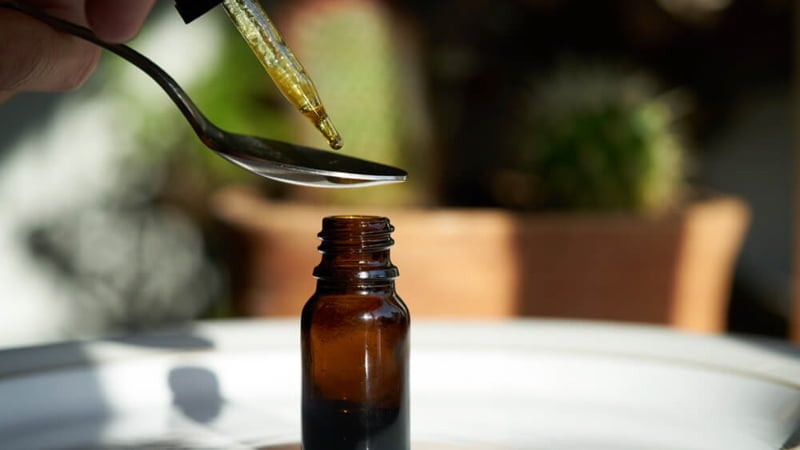
Dosing for CBG and CBN should be done with care because adverse effects are possible with both.
The recommended dose for both CBG and CBN is around 10–30 mg. If using these cannabinoids for the first time, it’s wise to start with a very low dose first (around 5 mg) and increase the dose gradually once you’re familiar with how your body will respond.
We should note, CBN has about 10% of the psychoactivity of THC — so high doses may be psychoactive. Don’t exceed 40 mg of CBN.
CBG vs. CBN: Chemical Structure
CBG and CBN are somewhat similar in their chemical structure — after all, CBN is ultimately derived from CBG. CBG is converted to THC, which is later converted to CBN.
Structurally, the main difference between these two cannabinoids is the formation of a carbon ring on CBN that’s absent in CBG.
The difference is subtle, but it makes a big difference in how these cannabinoids feel.
Researchers believe that these attributes determine how cannabinoids bind to and affect receptors in the endocannabinoid system, so these minor structural differences are likely the reasons these cannabinoids differ in their effect profile.
CBG vs. CBN: Drug Tests
Both CBG and CBN can cause you to fail a drug test, but your chances of failing are much higher with CBN.
Immunoassays — standard drug tests — detect the presence of particular molecules in the sample given, and most will only identify THC. CBG is chemically different from THC, and the chances of this cannabinoid alone causing you to fail a drug test is minimal.
However, since CBG is extracted from hemp plants, which can have trace amounts of THC — less than 0.3% by weight — your CBG product may deliver some THC that could show up on a drug test.
The chances of failing are significantly higher when you take CBN. CBN is more similar to THC, and while it’s unlikely to appear on a drug test, this cannabinoid often pairs with THC in products.
CBG vs. CBN: Do They Get You High?
CBG is a non-psychoactive cannabinoid, meaning it won’t produce a high or any intoxicating effects. Most users report having a better outlook and feeling prepared for the next task.
On the other hand, CBN is mildly psychoactive, so it can get you high even when consumed by itself.
CBN is considered about 10% as strong as THC — so you’d need to take a lot of it to feel any psychoactive effects.
CBG vs. CBN: Which One is Better?
CBG and CBN are both cannabinoids that offer many users positive effects, and ultimately, you’ll have to choose which is better for you.
CBG tends to have invigorating and uplifting effects, while most CBN users feel calm and ready for a good night’s sleep.
If you’re looking for a non-psychoactive cannabinoid to support your busy day, CBG is likely a better option.
CBN is probably a better fit if you’re looking for something to use while you kick back and unwind. Just be wary that if you take too much, you may feel some mild psychoactive effects compatible to THC.
